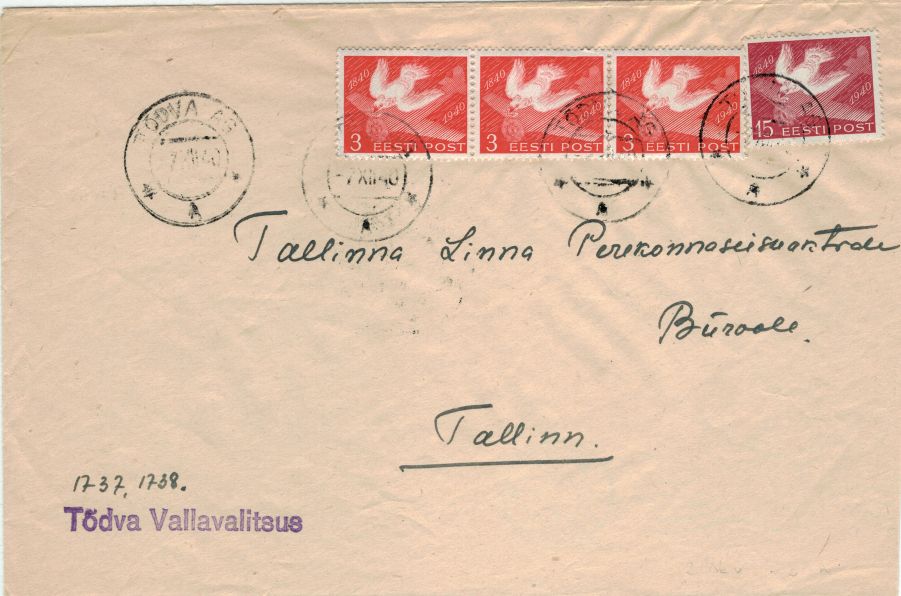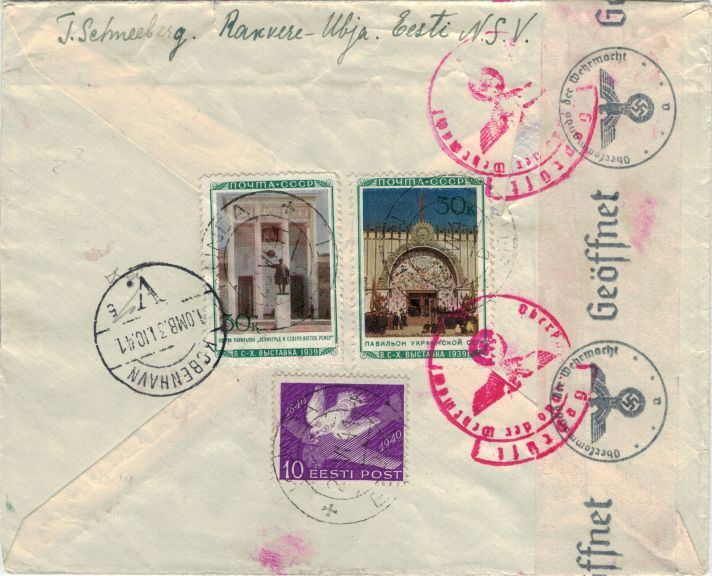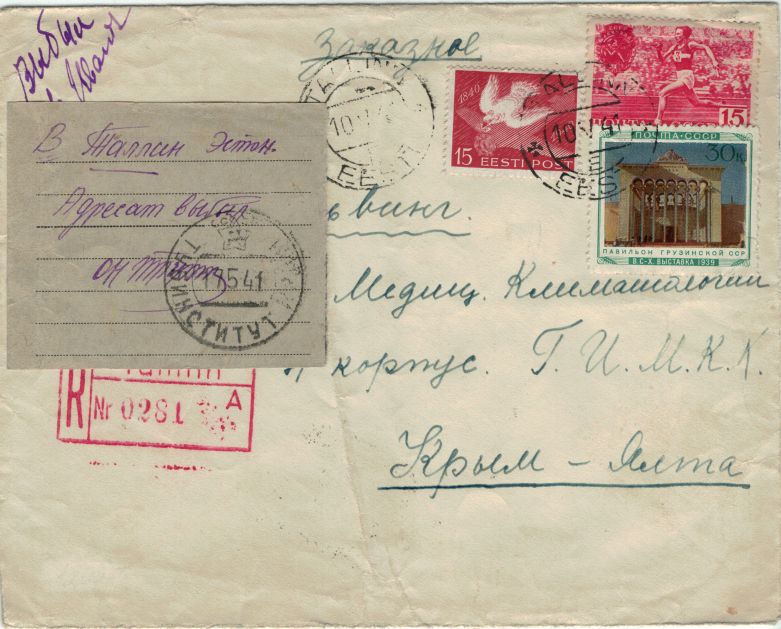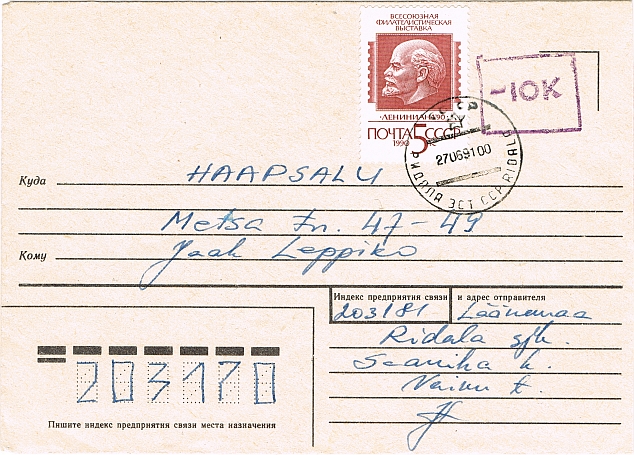Estonia
-
Royal Swedish Post
-
Imperial Russian Post
-
German Occupation / Ob. Ost
-
Independent Republic of Estonia
-
Soviet occupation
Soviet occupation 1939–41
As a result of the Hitler-Stalin Pact of 23 August 1939, Soviet troops occupied strategically important sections of Estonian territory in October 1939. The so-called "base period" had begun. It formally lasted until August 16, 1940, when Estonia was incorporated into the Soviet Union as a Soviet republic.
In fact, it ended on June 16, 1940, the date on which the Soviet army completely occupied Estonia. On August 6, 1940, the Soviet authorities took over the executive power and the Estonian Postal Administration was declared dissolved. A month later, on September 9, 1940, the Telecommunications Administration of the Estonian Soviet Socialist Republic (ESSR) was established.
On November 25, 1940, the Soviet ruble was introduced as official currency in the ratio 1.00 crown = 1.25 rouble, which led to interesting mixed frankings, but was only used sporadically.
On December 6, 1940, Estonian postal charges lost their validity and Soviet stamps like charges were introduced.
Formally, Estonian stamps remained valid until 31 December 1940. In reality, only the 1940 Community Aid issue, the pigeon issue commemorating the 100th anniversary of the introduction of the stamp, and the Heraldic Lion series of postage stamps remained in counter sale. The latter remained in use beyond 31 December 1940 until mid-1941.
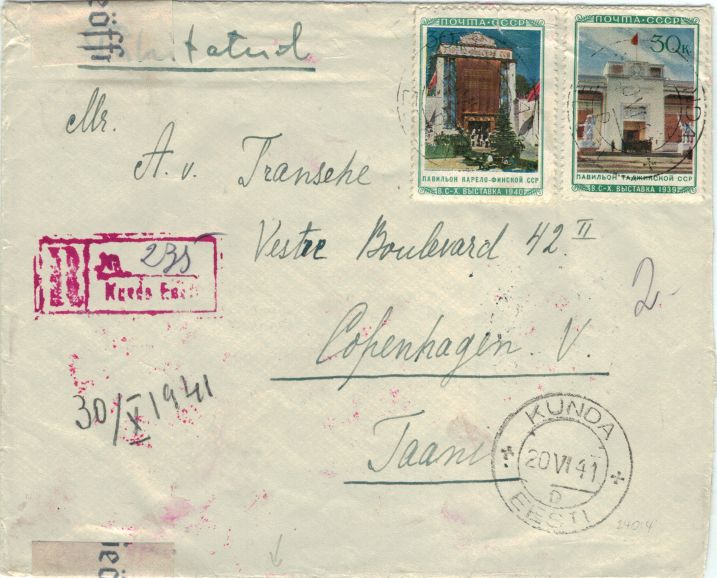
Censored R-cover from Kunda via Königsberg to Copenhagen, a so-called Überroller, as it – was posted under Soviet occupation – was "overrun" by the German invasion of the Soviet Union, therefore held up in Königsberg for months (German OKW censorship) and finally delivered to German-occupied Denmark. 20.6.–31.10.1941
In reality, an exchange rate of 1 krone : 1 ruble prevailed.
In contrast to the other two Baltic republics, the Soviet Union only sporadically introduced bilingual Cyrillic-Latin postmarks in Estonia before the start of the occupation by German troops in the summer of 1941.
Officially, the Soviet Union announced the end of the Estonian kroon as a valid means of payment at the end of March 1941.
Soviet occupation from 1944
The first phase of Soviet occupation of Estonia in 1939-41 ended with the occupation by German troops in July, August and September 1941 and the establishment of the General District of Estonia in the Reichskommissariat Ostland on December 5, 1941.
After renewed occupation by Soviet troops between July and November 1944, Estonia was again "included" into the Soviet Union as ESSR on October 6, 1944. Terror and tyranny remained the hallmarks of both regimes, the National Socialist as well as the Soviet.
The transition period 1991
As the Estonian Soviet Republic (ESSR), Estonia was of course fully integrated into the Soviet Union's postal system. After various failed attempts against the Soviet bureaucracy to raise the Soviet Union's postal tariffs, which were not adequate for the services of the Estonian Post, the Estonian SSR declared the Soviet postal tariffs invalid as early as January 1, 1991 and defined its own, significantly higher domestic postal tariffs for letters, postcards and additional services such as registered mail posted in Estonia.
The postal administration of the ESSR thus (NB: still as a Soviet republic!) de facto left the system of postal administration of the Soviet Union.
Due to the lack of stamps in sufficient numbers, the impossibility for the postal administration of the (still) ESSR to print its own (Soviet or Estonian) stamps or to have them printed, and in order to use the Soviet postal stationery available in large numbers at the post offices, a variety of additional postmarks (some also as local issues) were applied as value stamp imprints on postal stationery, envelopes and postcard forms and these were sold at post office counters at the new postal rate.
Mixed frankings with Soviet stamps for higher postage rates and after fee increases were the order of the day.
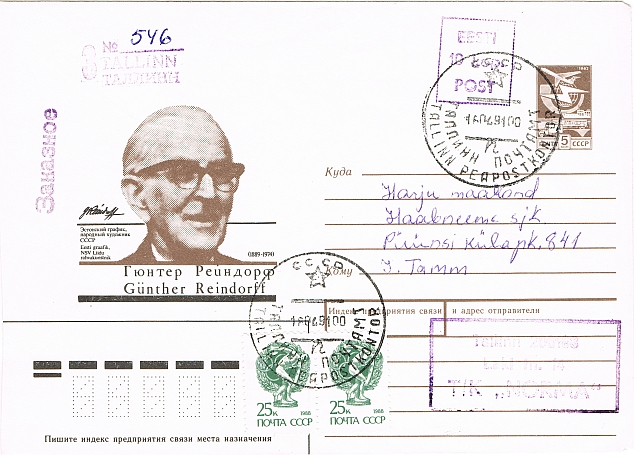
Cover 1991 from Tallinn to Haabneeme from the first counter day of the 10 kopecks additional cancel next to value stamp 5 kopecks = new domestic letter rate 15 kopecks.
On April 16, 1991, the envelopes with the new additional cancels came to the counters for the first time. Here with 50 kopecks additional franking for the registered letter.During the coup d'état in the Soviet Union on August 18-21, 1991, Estonia took the opportunity to reconstitute its independence on August 20, 1991.
-
German occupation / Ostland
-
Camp Mail / Estonians in Exile
-
Independent Republic of Estonia (restored)
-
Private Mail in Estonia



